|
55. Plebejus argus (Linnaeus, 1758) / Silver-studded blue / Lycaenidae – Polyommatinae
NL: heideblauwtje / D: Geißkleebläuling, Argus-Bläuling, Argus-Silberfleckbläuling / F: azure pygmée, azure de l’ajonc
 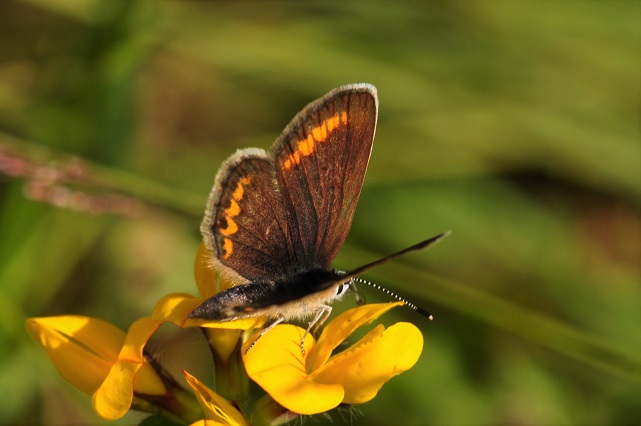 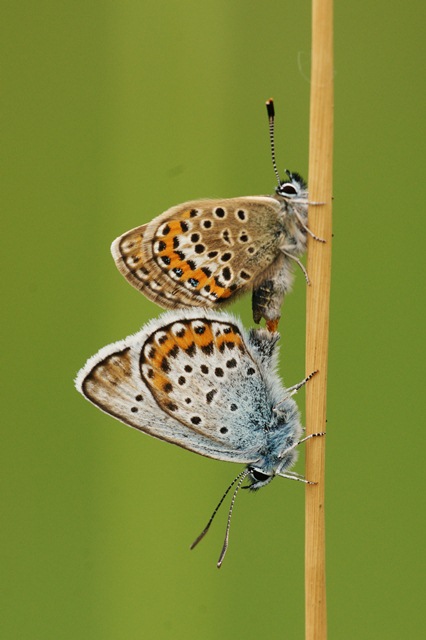
Photographs: Frits Bink, Sylvain Cuvelier, Jeroen Voogd ©.
Small, wing length 14 (11-15) mm. In the Benelux it is known in the Netherlands and Flanders from heathland, dry parts of raised bogs and coastal dunes, in Wallonia and Luxemburg on chalk grassland.
Butterfly is on the wing from early-June until early-August and peaks late-June and early-July.
It is known from maritime to severe continental climates, amplitude 5 to 20. Required heat sum 400°d, maximum tolerated 3000°d, corresponding climate windows 20 weeks and whole year open.
The butterflies often congregate in one place to overnight, very striking behaviour.
In France a second brood occurs regularly, in the Benelux only occasionally; these adult butterflies are much smaller than their parents.
Although the species is regarded as a typical heathland inhabitant, in most cases it is bound to small spots that can be recognized by the form of the heather growth.
Ecological characteristics
Behaviour over time
Overwintering: egg, fixed on the woody part of the host plant near to the ground.
Reproduction: oviposition starts after 5-7 days when the body contains 26 (24-28) eggs. Observed production is 3.5 times as much and the required oviposition time to reach this maximum is 22 days.
Larval feeding periods: 12 weeks in the period early-April until early-July.
Generations: in temperate climate one, in warmer ones two.
Spreading of risk: not observed.
Life cycle: egg 33-39 weeks; larva 70 (65-75) days; pupa 17 (13-20) days.
Life span of adult: long, 4 weeks, in an experiment with five adults 27 (19-33) days.
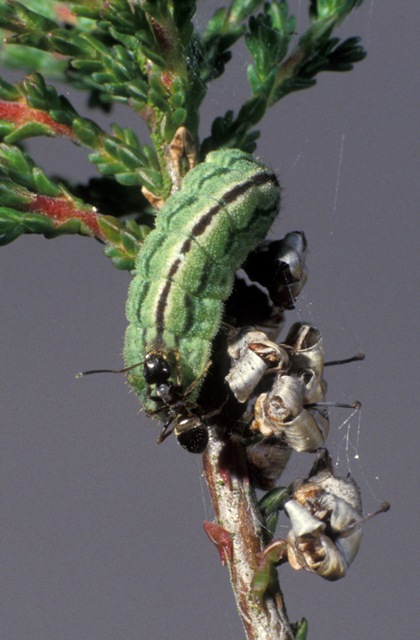 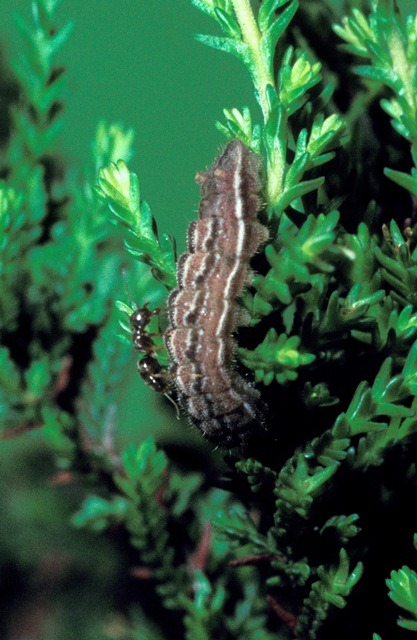 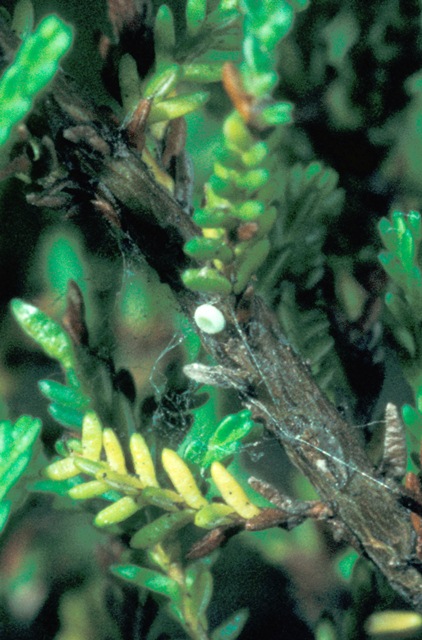
Photographs: Frits Bink ©.
Behaviour in space
From stay-at-home to migrant: stay-at-home, spatial requirement very modest.
Finding a mate: male perches but also congregates together with females, especially on the overnight roost.
Orientation in the landscape: places with short vegetation, either heathland or grassland.
Oviposition: eggs are laid on the wooden parts of the host near to the ground.
Defence
Threats from other organisms: avoidance by camouflage in the larval stage, the larvae are green or brown.
Myrmecophily: very active, full array of ant-attracting and appeasing organs present, larvae are usually attended by ants all day, at the time of pupation the ants construct a small hut where the larva hangs from the ceiling, attached by its cremaster. Tested ant Lasius niger. Pupation is also observed in ant nests (Thomas & Lewington 1991: 84).
Threats from the environment: vegetation succession that causes an increased humidity and coldness making the site unfavourable.
Feeding habits
Adult: nectar of small flowers, in most cases ling or cross-leaved heather.
Larva: when young the meristem or shoot is eaten, later it eats also leaves.
Larval foodplants
Plant species: Cistaceae, Helianthemum nummularium.
Ericaceae, Calluna vulgaris, Erica tetralix.
Fabaceae, Genista anglica, Lotus corniculatus, Securigera varia.
Journal
Rearing experiments:
1. Based on a specimen from Amerongen, Netherlands:
17August 1980: 15 eggs laid on Calluna.
Overwintered outdoors.
24 January 1981: taken indoors.
20 March: eggs hatched.
19 April: larvae 3 mm in length.
22 April: larvae 6 mm in length.
10 May: working of lateral organs noted: as soon as an ant left the larva it bulged out its tentacles, as soon the ant returned, these were retracted at lightning speed.
29 May: larvae pupated in a hut constructed by the attending ants. The pupae hung from the roof, attached by the cremaster. When it dropped down to the floor, the pupa remained unhurt and developed normally.
1 June: ants abandoned the pupae, they switched to a larva of Celastrina argiolus.
3 June: first pupa hatched, male.
12 June: second pupa hatched, female.
2. Based on specimens from Leemputten van Staverden, Ermelo, Netherlands:
29 June 1989: eight butterflies collected from a roosting place.
4 July: adult butterflies started activity when air temperature reached 25°C, first one that hid from the heat when the temperature reached 37°C; however, at 44°C there were three out of eight still acting normally.
6 July: observed host preferences (see table 55-3).
13 July: a total of 93 eggs had been laid on a Calluna bush (see table 55-2).
Table 55-1. Results of dissections

Table 55-2. Average egg production per day over period of 20 days

Table 55-3. Host plant preference during oviposition of 8 butterflies 3-6 July 1989

Table 55-4. Collection and observation localities
D, Gildehauser Venn 48 m, 52° 15’ 25”N - 7° 06’ 22”E; 24 June 2010.
DK, Gundersted 56° 55’ 08”N – 9° 26’ 31”E; 10 July 2005.
DK, Tofte Mose 56° 50’ 39”N –10° 11’ 11”E; 5 July 2005.
EST, Endla Nature Reserve 58° 52 34”N – 26° 16’21”E; 10 July 1999.
EST, Valge raba 58° 26’ 29”N – 25° 14’ 09”E; 8 July 1999.
EST, Viruna 58° 28’ 51”N – 23° 58’ 32”E; 5 July 1999.
F, Normandy, la Gistardie, 36 m, 49° 09’ 08”N – 1° 28’ 18”W; 11 September 2007 (second brood).
L, Kautenbach 341 m, 49° 56’ 25”N – 6° 01’ 57”E; 21 September 2011.
NL, Ermelo, Staverden 52° 16’ 23”N – 5° 43’ 55”E; 29 June 1989.
NL, Haaksbergen, Harrevelderschans 52° 08’ 59”N – 6° 46’ 45”E; 5 July 2003.
NL, Hoge Veluwe 52° 05’N – 5° 51’E; 11 July 1983, 30 July 1984.
NL, Hoge Veluwe 52° 04’ 47”N – 5° 49’ 47”E; 27 July 2000, 31 August 2000.
NL, Kampina 51° 34’ 04”N – 5° 14’ 51”E; 12 July 2003.
NL, Leersum 52° 02’ 12”N – 5° 25’ 49”E; 17 August 1980.
NL, Losser, Duivelshof 30 m, 52° 17’24”N – 6° 59’ 48”E; 23 June 2010.
NL, Punthuizen 52° 21’ 03”N – 7° 04’ 00”E; 25 June 2010.
NL, Stroothuizen 32 m, 52° 22’ 10”N – 7° 02’ 45”E; 25 June 2010.
NL, Tubbergen, Paarden Slenken (Mander Heide) 52° 27’ 19”N – 6° 49’ 38”E; 26 July 1960 (present together with P. idas but not after 24 July 1985), 16 July 1992, 23 July 2008.
S, Gotland, Klinteklinten 57° 40’ 14”N – 18° 46’ 26”E; 13 July 2004.
S, Gotland, Russväter 57° 23’ 29”N – 18° 43’ 36”E; 21 June 2004, 16 July 2004.
S, Öland, Noaks ark, 26 m, 56° 46’ 29”N – 16° 37’ 27”E; 8 July 1982, 23 July 2004.
Fig. 55-1. Plebejus argus, phenogram adapted from Fichefet et al. 2008: 131.
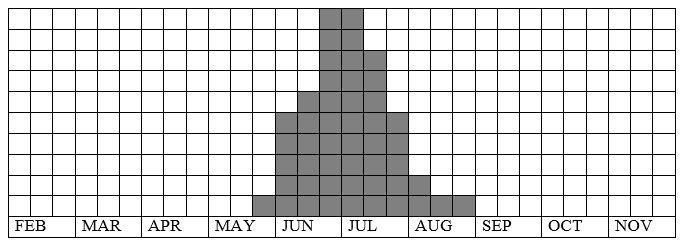
Fig. 55-2. Plebejus argus, habitat characteristics.
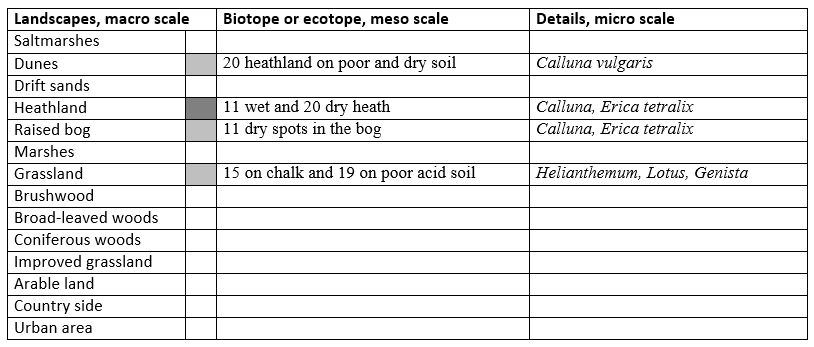
Fig. 55-3. Plebejus argus, climate matrix, heat-sums 400 - 3000°d.
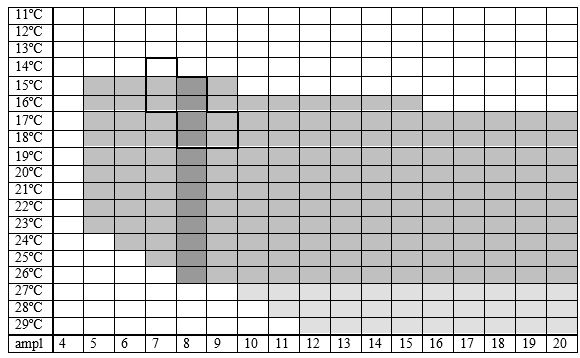
|













